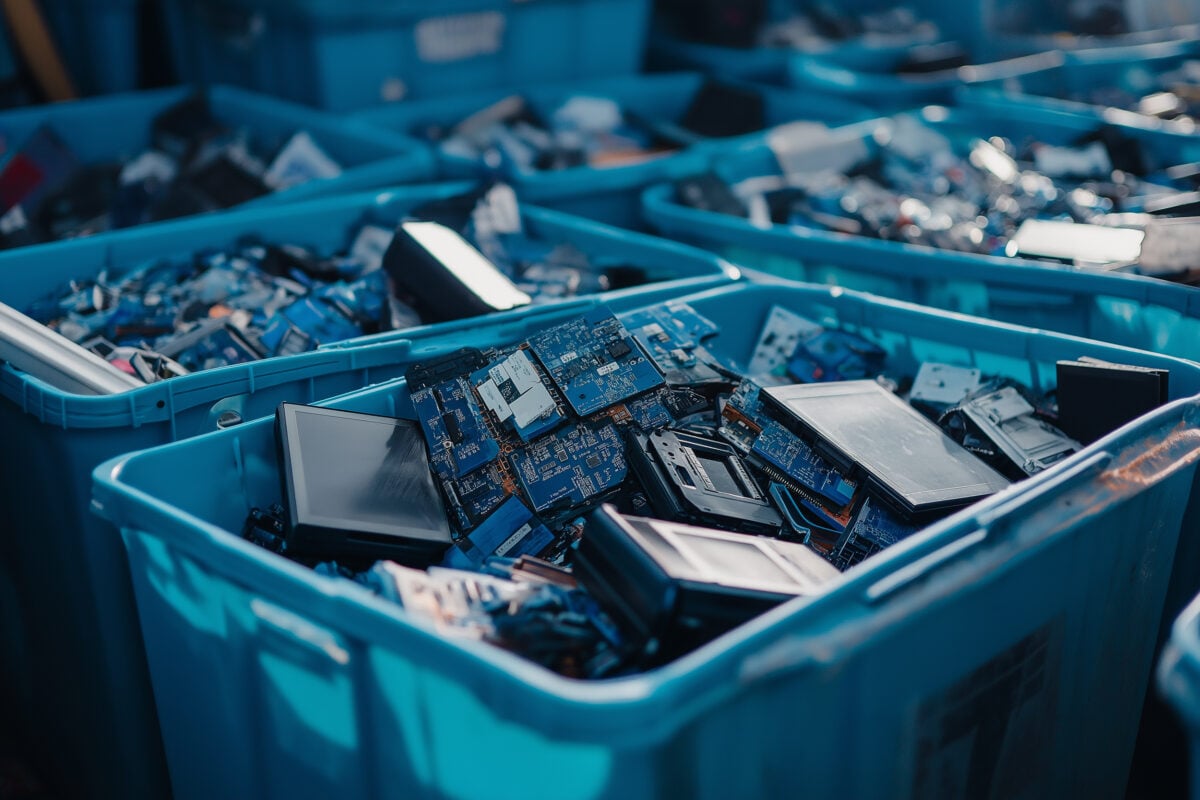
What’s the difference in IT Hardware Disposal?
Businesses generate a significant amount of electronic waste (e-waste), particularly in the form of IT hardware such as computers, servers, and networking equipment. Disposing of this e-waste responsibly is crucial for minimizing environmental impact and ensuring data security. Two primary waste management strategies for IT hardware are Zero to Landfill and traditional recycling. This article explores the differences between these approaches, with a focus on how they affect the disposal of IT hardware and contribute to sustainability.
What is Zero to Landfill?
Zero to Landfill is a waste management strategy that aims to eliminate all waste from being sent to landfills. For IT hardware, this approach involves reusing, refurbishing, recycling, or converting materials into energy. The goal is to manage the entire lifecycle of IT assets in a way that maximizes resource recovery and minimizes environmental harm.
Key aspects of Zero to Landfill for IT hardware:
- Refurbishment and Reuse: A significant portion of IT hardware can be refurbished and reused. According to the International Association of IT Asset Managers (IAITAM), refurbishing IT equipment can extend its life by an average of 3 to 5 years, reducing the demand for new products and the resources needed to produce them.
- Recycling of Components: Non-reusable components are recycled, with valuable materials such as gold, silver, and copper being extracted. In 2020, approximately 17.4% of global e-waste was documented as being collected and properly recycled, according to the Global E-waste Monitor.
- Energy Recovery: Components that cannot be reused or recycled may be processed in waste-to-energy facilities. This process involves incinerating non-recyclable materials to generate electricity or heat, ensuring that no waste is sent to landfills.
What is Traditional Recycling?
Traditional recycling for IT hardware involves the collection and processing of electronic devices to recover valuable materials and safely dispose of hazardous components. However, traditional recycling often has limitations, especially with complex devices like computers and smartphones, where only certain parts may be recyclable.
Key aspects of Traditional Recycling for IT hardware:
- Material Recovery: Traditional recycling focuses on recovering valuable metals and plastics from IT hardware. For example, a typical smartphone contains about 0.034 grams of gold, 0.34 grams of silver, and 15 grams of copper. While these amounts seem small, when multiplied across millions of devices, the value adds up.
- Disposal of Non-Recyclable Components: Parts that are not recyclable often end up in landfills. The Basel Convention reports that about 50 million tons of e-waste is generated globally each year, with a large portion of it ending up in landfills, contributing to environmental degradation.
- Focus on Easily Recyclable Materials: Traditional recycling efforts often prioritize materials that are straightforward to process, such as aluminum and certain types of plastic, while more complex components may not be recycled effectively.
Comparing the Two Approaches for IT Hardware
When it comes to IT hardware, Zero to Landfill and traditional recycling differ significantly in their approach to managing e-waste.
Scope of waste management
- Zero to Landfill takes a comprehensive approach by aiming to reuse or recycle all parts of IT hardware. For instance, companies like Dell have committed to recovering 100 million pounds of used electronics annually as part of their Zero to Landfill initiatives.
- Traditional Recycling focuses on easily recoverable materials, often leaving behind components that are difficult to process, which may end up in landfills.
Environmental impact
- Zero to Landfill significantly reduces the environmental impact by ensuring that all parts of IT hardware are either reused, recycled, or converted into energy. This approach prevents toxic substances, such as lead and mercury found in electronics, from leaching into the environment from landfills.
- Traditional Recycling reduces environmental harm but is limited by the types of materials it can effectively process. This often leads to the disposal of complex or hazardous components in landfills, where they contribute to pollution.
Data security
- Zero to Landfill practices often include rigorous data destruction methods as part of the IT asset disposition (ITAD) process. This ensures that sensitive information on hard drives and other storage devices is completely eradicated before recycling or repurposing.
- Traditional Recycling may not always prioritize data security, especially if the focus is solely on material recovery. This can leave businesses vulnerable to data breaches if not handled properly.
Cost and implementation
- Zero to Landfill may involve higher initial costs due to the need for specialized recycling processes and energy recovery systems. However, the long-term savings from resource recovery and reduced landfill fees can offset these costs. Companies like Microsoft have reported significant cost savings by adopting Zero to Landfill practices across their global operations.
- Traditional Recycling is often more cost-effective in the short term, relying on established systems for material recovery. However, the environmental costs and potential data security risks may outweigh these savings in the long run.
Which approach is right for your business?
For businesses managing large volumes of IT hardware, the choice between Zero to Landfill and traditional recycling depends on your sustainability goals, the complexity of the waste, and the resources available for waste management. Zero to Landfill offers a comprehensive solution that aligns with corporate social responsibility and environmental stewardship, making it an ideal choice for businesses committed to sustainability. On the other hand, traditional recycling may be suitable for businesses looking to minimize costs while still contributing to environmental conservation.
By understanding the differences between these two approaches, businesses can make informed decisions that not only protect the environment but also enhance their brand reputation and operational efficiency. Whether you choose Zero to Landfill or traditional recycling, the key is to implement a strategy that aligns with your long-term sustainability goals and ensures responsible management of IT hardware.